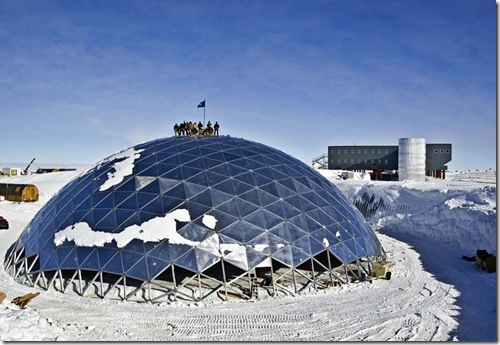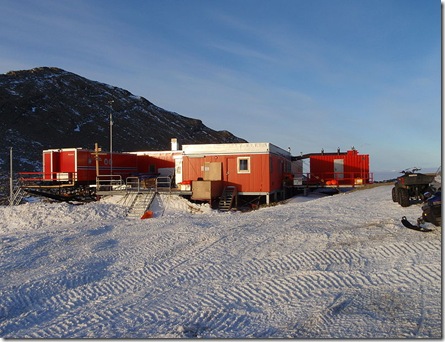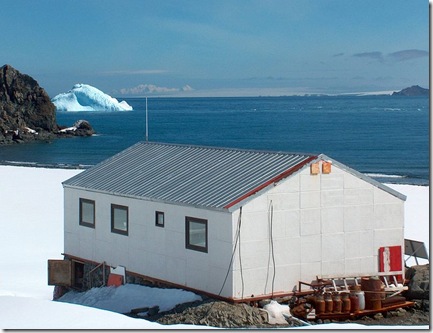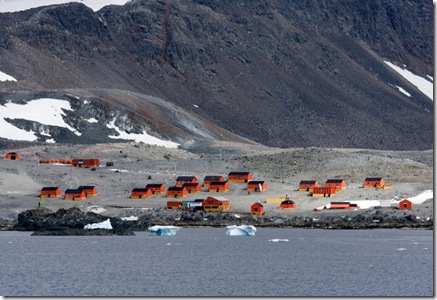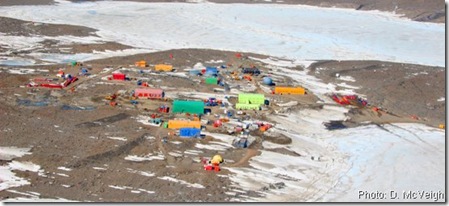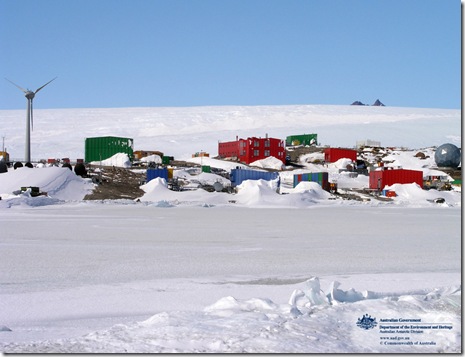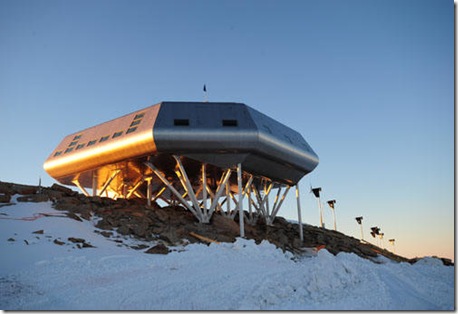On rock worship and the Shinto gods | The Japan Times OnlineI was interested to read this article by Japan Times columnist Amy Chavez, concerning how Shinto works.
It's basically an animistic religion, with particular places said to have their local god. But I wasn't really aware of this aspect of it:
Part yamabushi and part spiritual healer, Man-chan is 84 years old and considered the person most in touch with the Shinto spirits (kami), on our island. He alerted me to a couple of yorishiro or spiritual antennas to the gods. These days the kami probably have handheld GPSs made in China, but in ancient times you still had to send them a spiritual sign. So special rocks or trees were designated as antennas to invite the kami to descend there. No batteries necessary.
The most famous rocks of this sort in Japan are perhaps Meoto Iwa, the "husband and wife rocks" off the coast of Mie Prefecture. These rocks invite the kami to descend on them from above. You often see these two rocks in photos, a special shimenawa rope connecting them across the water. Let's hope they never divorce.
Man-chan told me that Shinmei Shrine was considered sacred because of the small cave there. But the two other places he told me about, Myoken and Hachiman, were given their status by a Shinto priest. In other words, the priest invited the kami to descend there. When a priest calls to the kami to descend, he must feel the kami enter his body. He must feel the spirit of the kami in his heart. He may even prostrate himself before the kami. If he does not feel the kami inside him, they have not descended and the spot is not made sacred.
Various shamanistic and animistic religions appear to have this idea: that the priest or holy man takes the nature god or spirit into his body in a useful form of spirit possession. I remember David Byrne talking about a South American religion that was like this. He made
a documentary about it that I haven't seen, but as I recall, there is a lot of trance inducing rhythm and singing, all while waiting for a nature god, like the chicken spirit (I actually do think he mentioned such a poultry spirit - that is what made me remember it) possesses the shaman/priest for a while.
I don't know whether the Shinto priest would say he is "possessed" by the kami, but I didn't know that having it in his body was part of their religion at all.
Of course, the idea of incorporating the spirit of God is a feature of Christianity too. A Christian apologist can argue that the animistic systems which believed in the importance of this were pre-figuring the true religion that was revealed through Christ. But of course, it still leaves the question: what is it that a shaman or priest is sensing when they believe they are possessed by a god or nature spirit?
A fundamentalist Christian, I suppose, might argue that it could be a true supernatural entity being sensed: just not a holy one. (I certainly don't expect that fundamentalists think God sends angels to act as if they were the Great Chicken Spirit, in the hope of guiding shamans towards Christianity.)
But really, what these religions which incorporate possession as a holy ritual must show is the human susceptibility to misinterpreting a generic "high," or a passing emotional feeling, with communion with the gods. And this, in turn, doesn't say much for those who rely on emotional responses in Christian services as proof of their religion, or a source of sound guidance.
I find the whole question of the sense of feeling God's presence or guidance a vexed issue. On the one hand, if God is capable of raising from the dead, amongst other miracles, the possibility of simply bumping the right neurons in the brain so as to make a person understand what God thinks he should do seems a relative breeze. I mean, it just seems wrong to argue that the Christian God is incapable of such subtleties, and can only work on a big dramatic canvas.
On the other hand, it seems that people are continually thinking that God or the spirits are guiding them: from Mormons who like to argue that if a person prays sincerely, they will "know" that this is the true church; to shamans who think they are being possessed by a nature spirit for a night.
They can't all be right.
Anyway, this is generally why I am very cautious on the whole issue of the importance or what a believer feels in any religion.
Of course, an over-intellectualisation of moral or religious belief runs its own dangers too. Certainly, I don't dismiss the importance of the intuitions or emotions in their guidance for the moral life. I continually find myself amazed, for example, when thinking about the Holocaust, that the intellectual justification for treating Jews as so much cattle to be slaughtered managed to triumph over what must have surely been a instinctive reaction against cruelty to fellow humans; particularly children. (The "girl in the red dress" sequence was particularly good in Schindler's List, I thought, for showing a man whose empathy with an innocent child would not let him accept the intellectually justified horror going on around him.)
I similarly find it difficult to fathom that some people have no problem with late term abortion, when the fetus has but the slightest genetic problem. (Although attitudes to killing even new born children have been extremely different in the past to what they are now, and I guess that I shouldn't be surprised that modern people can be comfortable killing viable babies by late term abortion.)
And then, on the fourth hand (I'm starting to lose count), appeals to the primacy of emotionalism and an inner sensation for guidance (which is fundamentally what I think a lot of people mean when they say they are interested in spirituality in their religion) leads to some pretty soft headed ideas in the modern world. Gay marriage is one of these; it being tied up with the triumph of gay identity politics over what I think is a more common sense view as to what marriage is fundamentally about - the possibility of procreation.
I think most people would tend to see spirituality as a more feminine aspect of religion, and intellectual interest in defining rules and logic as a male pursuit. For that reason, people think greater female input into Catholicism would make it more humane in areas such as teaching on sexuality. And to an extent, women can be more practical than men, and are better at not following logic and reason to conclusions that are nonsensical, which is how I view something like the Catholic teaching that a condom used by a loving husband and wife converts the sex into something sinful, whereas timing sex to avoid pregnancy does not. Yet Anglicanism and other Protestant denominations which have become very "feminized," for want of a better word, lose following because a generic sense of feel good spirituality does not particularly need any Christianity to keep it going. (The "feel good" soft rock churches like Hill Song don't seem particularly feminised; I'm not quite sure how to explain how they fit into this outline I'm sketching.) It also seems to me that women can be the worst at reading (or imagining) too much into their fleeting emotional feelings - hence the predominance of women into spiritualism or New Age ideas. (What about shamans, then? I see that
some sites claim that a lot of them are homosexual, as indeed in the West they seem to be over-represented amongst spiritualist mediums.*)
So, where does this leave us? A religion which incorporates nothing by way of ceremony or practice with which to uplift the heart is not appealing at all: it seems hard to argue Biblically that these things are not a legitimate concern of God. But the Protestant churches who treat every Sunday service as a soft rock concert that is only designed to hit the heart seems equally wrong. A rule bound over-intellectualised Church can indeed be inhumane; but go too far the other direction and it becomes redundant.
It is perhaps the straddling of the two aspects that is what I find appealing about the Catholic Church, but as I say, we still have the problem of how even a Catholic should understand the sense of God moving in them personally.
It could, of course, be taken all as reason to believe that all religious feeling is delusion, as is all internal sensation that God is influencing a person in any particular way or direction. But what is the fun in that? Thinking about the various mixed messages and ways of interpreting religion and religious sensation seems a rather more interesting past time than many other pursuits; at least to me.
* Isn't it funny how native cultures might elevate a homosexual man by making him the shaman; today Western society has similarly decided to treat them as special and able to do no harm, such as in the way the magazines will gush over Elton or Ricky Martin using the magical powers of egg donation and renting a womb to conceive a child without sex!
